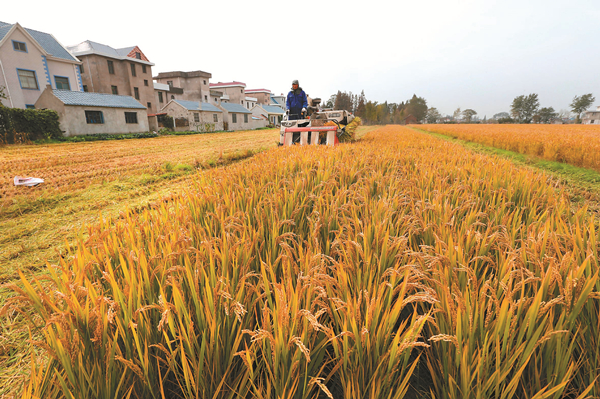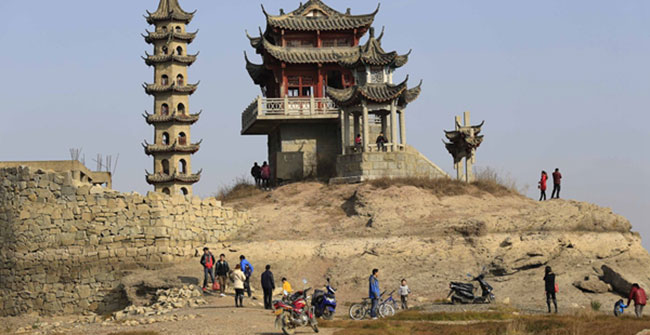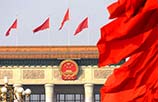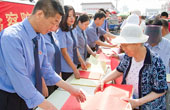Nantong improves livelihoods through agricultural reform
By Ding Congrong, Tang Xiaofeng (China Daily) Updated: 2016-01-15 09:09Productivity and incomes on the rise, Ding Congrong and Tang Xiaofeng report.
Nantong in East China’s Jiangsu province has made great progress in promoting agricultural modernization and improving rural residents' livelihoods through sustainable and innovation-driven development during the 12th Five-Year Plan (2011-15).
The city's grain output reached 3.41 million metric tons in 2015, an increase of 4.9 percent from 2010 and marking the 12th consecutive year of growth. The average grain output per hectare of farmland was 6,550 kilograms, an increase of 6.7 percent from 2010.
Nantong has also improved the industrial structure of its agriculture by expanding the plantation area of high-yield grain crops and decreasing that of low-yield cash crops such as soybeans and cotton.
Of Nantong's 520,000 hectares of land planted with crops last year, pastures growing high-yield grain crops including rice, wheat and corn accounted for 76.7 percent, 0.5 percentage points higher than the previous year. The city also increased its plantation area of vegetables by more than 2,500 hectares, bringing the total area to 200,670 hectares, which provides more than 60 percent of the consumption of residents.
Over the past five years, Nantong has built six agricultural product processing centers, attracting 309 businesses and generating annual sales of more than 1 billion yuan ($152 million) for each of the 18 specialty industries in the city's counties. The city also built 71 recreational agricultural parks, bringing the total number to 325. The total investment in the parks was 11 billion yuan.
In January 2015, Nantong was named a national pilot for modern agriculture by the Ministry of Agriculture. The city government has since made the development of modern agriculture a priority of its agricultural work during the 13th Five-Year Plan (2016-20) and stepped up efforts in such aspects as policy support, resource integration, reform and innovation.
The city's agricultural mechanization level increased from 81 percent in 2014 to 83 percent last year, according to the city's statistics. Twenty-three percent of the city was covered by forests in 2015, up from 22 percent in 2014.
 |
|
The grain output of Nantong, Jiangsu province, increased 4.9 percent to 3.41 million metric tons in 2015 from a year earlier, marking the 12th consecutive year of growth. XU CONGJUN FOR CHINA DAILY |
Increased income
The city's drive in promoting agricultural development has brought tangible benefits to its residents.
Yu Dongjuan, a grain producer in Qidong, a county-level city under the administration of Nantong, who was named a National Model Worker by the central government and the State Council in April 2015, almost doubled her income after she started planting rice.
Farmers in Qidong, which features sandy soil, used to grow low-yield drought-tolerant crops. Agricultural technicians are helping local farmers plant rice after they harvest their wheat, which has significantly increased their incomes and encouraged more people to follow suit. The per hectare annual income of planting in this way could reach 39,000 yuan, doubling the current level, technicians said.
Sustainable growth
The Shengjie Husbandry Co in Haimen is an example of Nantong's innovation-driven growth in agriculture.
The company sells 24,000 pigs annually. To deal with the pig manure, the company launched a power project using methane generated by the waste in 2012, which provides all of its electricity. However, more than 2,000 kilowatt-hours of electricity was being wasted every day.
In August 2015, the company integrated its power network into the State grid and began to sell its extra electricity to the grid.
Thirty pig farms in the city, each with annual output of more than 10,000 pigs, have launched 28 methane power projects, the total installed capacity of which reached 3,050 kilowatts.
Better infrastructure
Nantong has also invested 3.15 billion yuan over the past five years to improve the environment of its rural areas.
In April 2014, the city was granted a provincial award for its residential environment. Seventy-eight villages in Nantong were named scenic villages above city level. Kaisha village in Tongzhou and Guzhuang village in Rugao were named the most beautiful villages in China in November 2014 in an appraisal by more than 10 sponsors, including China Business News, online travel service provider Ctrip and the Chinese Wisdom Industry Development Research Institute.
The city has also built or renovated 1,205 pump stations, dredged 498 rivers at the county or town level and made safe drinking water available to 402,900 rural residents and 229,100 teachers and students at rural schools.
In January 2015, Nantong began construction of the Jiuweigang Pump Station, the largest water resource project in the city. When completed, the 363-million-yuan project will effectively alleviate the increasingly severe pressure on water resources and improve the city's water supply network.
Contact the writers through dingcongrong@chinadaily.com.cn
- Nation in bid to ward off the Zika virus
- Li drops in for a chat at historic mosque
- Prison time reduced after 11 show they regret crimes
- PLA vows support, contributions to military reform
- Hainan looks to boost visitor numbers
- Excessive emissions a big problem in 59 cities
- Tough rules will cut marine pollution
- PLA revamps command system
- Teen calls for educational reform at political meeting
- Huge investment fraud ring smashed






